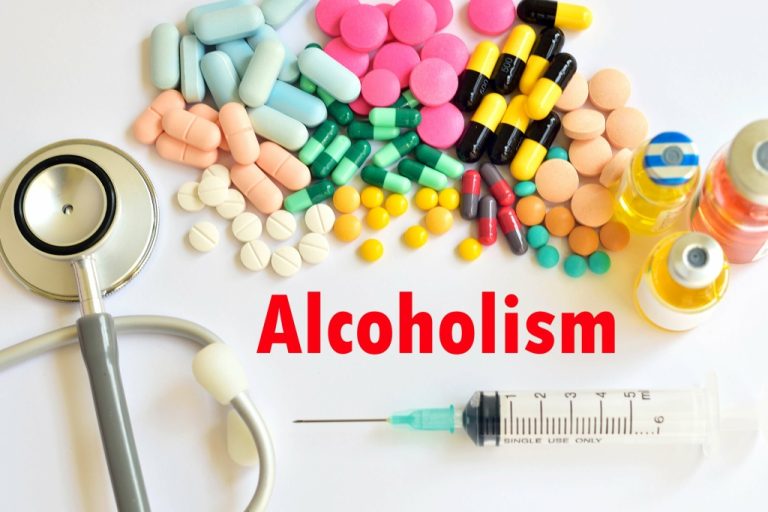How Much Does a Sober Living House Cost? Find Out Now
Every compliance step followed, every dollar raised, and every partnership forged is in service of that goal. As you progress, measure your achievements against the plan and adjust as necessary – flexibility can be as important as planning in such initiatives. By implementing these strategies, individuals can effectively manage the financial aspects of sober living, maximizing resources and focusing on the crucial goal of sustained recovery. Informed decision-making and proactive planning contribute significantly to long-term success. The most effective sober living environment aligns with individual needs and preferences, not solely on price. Careful evaluation of program components and available resources is crucial.
Hand in Hand Recovery Center
They are often located in prime areas and offer a higher standard of comfort. These competencies build confidence and help residents transition into autonomous living with the tools needed to maintain stability and sobriety. Sharing experiences in a recovery residence builds empathy and mutual encouragement, which improves relapse prevention. Regular house meetings and mentorship pairings strengthen bonds and sustain motivation through challenges. Join our sober living community or refer a client, family member, or friend. Fill out the form at the bottom of this page to connect with Vanderburgh Sober Living and explore training options designed to set you up for success.
Applying for Non-Profit and Charitable Assistance
The cost of staffing for a luxury sober living facility like Luxe Harmony startup plays a pivotal role in controlling overall sober living cost. In fact, industry benchmarks suggest that salaries for therapists can range from $75,000 to $85,000 per year, while wellness coaches are often compensated at figures between $65,000 and $75,000 annually. Additional expenses, such as benefits packages and background check fees, can add approximately 20-25% on top of base salaries. Industry benchmarks indicate that careful planning in these areas can trim initial expenditures by nearly 25% compared to traditional models. Ascension House, for example, provides a structured environment that includes relapse prevention, peer support, and life skills training, which are reflected in the monthly fees. These programs not only provide a safe space for recovery but also offer valuable resources for maintaining sobriety long-term.
Summers House – Gambit Recovery
If you have health insurance, check to see what kind of coverage you have and what services or amenities are included in your plan. Government agencies or local organizations may provide financial assistance or resources to individuals seeking recovery support. Certain sober living facilities may also have scholarship programs to support underprivileged residents. The sober living cost typically covers rent for shared accommodations, but it may not include all expenses.
- Sober living homes serve as real-world laboratories for practicing and honing relapse prevention skills.
- Instead of piecing together information from scattered sources, operators gain a structured, step-by-step framework supported by templates, mentorship, and an active peer community.
- By understanding your PPO plan’s specifics, you can better navigate the financial aspects of sober living, ensuring you focus on what truly matters – your recovery.
- If you’ve set money aside for post-treatment support, these funds can be allocated to cover sober living expenses.
What Are the 2025 Startup Costs for Upscale Sober Living Facilities?
For example, a 30-day stay at a facility charging $1,000 per month would cost $1,000, while a six-month stay at the same facility would total $6,000. Understanding this relationship allows for realistic financial planning https://ecosober.com/ and informed decision-making. The cost of sober living can vary depending on several factors, including location, amenities, and the level of support provided. Typically, residents of sober living homes are required to pay rent, which can range from a few hundred to a few thousand dollars per month.
Understanding these fundamental fixed expenses provides a clearer picture of the rehabilitation cost analysis for an upscale sober living facility. With careful monitoring and a dedicated approach to budgeting, facilities like Luxe Harmony can maintain the high standards required by their discerning clientele. For a high-end recovery center, competitive salaries and benefits are critical for attracting top-notch therapists, recovery coaches, and support personnel. Often, budgeting for staffing may require allocating 30-40% of the total operating budget. This ensures that residents benefit from personalized recovery plans and comprehensive care.
Habits for Proper Mental Health
We offer cost-optimization solutions based on proper market research and cost comparisons. We believe in partnering with you to make your behavioral health business profitable and minimize the costs of opening your halfway house. Staff salaries account for most of the costs of opening a sober living house. The number and the salaries of the staff are to be devised to attract and retain the ideal staff because it depends on their practical efforts to take your business where you want it to be.
- This barrier can have significant consequences, increasing the risk of relapse and hindering long-term recovery prospects.
- If you or your loved one is transitioning out of rehab, consider sober living as a safe and supportive bridge to independence.
- Investing in state-of-the-art appliances and ensuring their regular upkeep can help avoid unexpected repair costs and maintain high safety standards.
- Overall, government assistance for sober living homes is multifaceted and can significantly impact the availability and quality of recovery housing.
- For a mid-range budget, costs typically rise to around $750,000 to $1.2 million.
- The cost of a sober living home typically ranges from $300 to $2,500 per month, depending on the location and services offered.
While there are some alcoholism symptoms free sober living homes available, they are often limited in availability and may have long waiting lists. It’s important to do research and contact local organizations to find out about any free options in your area. Residents who violate these rules may be asked to leave the home immediately.
Take Your First Step
Procurement of quality kitchen equipment and dining ware is another key factor. The initial investment here may range from $40,000 to $70,000, ensuring that the facility is equipped with state-of-the-art appliances and durable, stylish dining supplies. This expense is vital, as the right equipment directly supports streamlined kitchen operations and aligns with the upscale ambiance of the facility.
Such routines are crucial, as they help fill the void left by addiction with positive activities and habits. Fill out a quick form to connect with specialists and explore personalized paths to lasting recovery. Others may allow residents to work or volunteer in exchange for reduced or waived fees.
This eliminates exposure to triggers and relapses, ensuring a stable environment that prioritizes recovery. Residents can stay in sober living for as long as they need and as the home permits. Each recovery residence is different, depending on their funding, and level of home.
Halfway Houses: Definition, Rehabilitation, Reintegration, and Recovery
Knowing how long you may spend in a halfway house—and what influences that decision—empowers you to plan effectively, advocate for yourself or your loved one, and make the most of every opportunity for successful reintegration. This phased approach is designed to maximize successful reentry, reduce recidivism, and support public safety by gradually increasing an individual’s autonomy. Continuity of care is prioritized—residents often arrive with an initial supply of prescribed medications and are assisted in establishing connections with local healthcare professionals to maintain their treatment plans. Facility availability, funding, and other administrative considerations may influence the actual length and timing of halfway house placement.
Halfway House vs. Sober Living: What’s the Difference?

Staff play an active role in maintaining a structured environment by supervising residents, enforcing rules, and providing access to counseling and recovery resources. Daily routines include scheduled therapy, participation in support groups, assigned chores, curfew compliance, and required job searching or employment, all aimed at sustaining sobriety and promoting life stability. Mandatory drug and alcohol testing define halfway house helps maintain a sober living space, reducing the risk of relapse among residents.
Verify your insurance

Life skills training, such as budgeting, cooking, and job searching, equips residents with the necessary tools to succeed in their personal and professional lives after leaving the halfway house. Residential programs designed to provide transitional services and assistance have existed in the United States since the beginning of the 19th century. The majority of programs in the United States make a distinction between a halfway house and a sober/recovery house. The purpose of these houses is to provide shelter and create a structured environment that aids recovery.
Who manages transitional housing?
Though it takes many forms, transitional housing broadly refers to a supportive community that offers temporary housing for different segments of the homeless population or those experiencing a crisis. Valley Spring Recovery Center offers comprehensive addiction and mental health treatment services. Contact our admissions team, available 24/7, to start your journey towards recovery. Halfway houses promote independence by encouraging personal responsibility and accountability.
How Do Insurance and Healthcare Access Work for Halfway House Residents?

Journalists have revealed how, when individuals are required to have a halfway house lined up in order to be released on parole, they can encounter lengthy waitlists due to inadequate bed space, forcing them to remain in prison. State-licensed halfway houses can be referred to by a variety of terms, like Transitional Centers, Reentry Centers, Community Recovery Centers, etc. These facilities work with corrections departments to house individuals leaving incarceration, often as a condition of parole or other post-release supervision or housing plan. Generally, this means that these homes aren’t ideal for untreated trauma, dual diagnosis, or very high relapse risk. This is largely because they lack the clinical oversight and therapeutic support required to overcome these hurdles. Residents in a halfway house often participate in counseling, recovery programs, and group therapy sessions.
Transitional housing’s goal is to offer a safe space in which people can process their trauma, work on the issues that led to their homelessness, and build a supportive network that will help them in the future. Stepping into a halfway house means rebuilding your life with a strong support system, structure, and guidance. Let’s explore the common guidelines that make halfway house living effective in helping residents transition back into society. Well-run halfway houses that offer comprehensive support services have the greatest impact on reducing reoffending and helping individuals successfully reintegrate into society. Many individuals who qualify for reentry programs end up remaining in prison longer than necessary due to a lack of housing options.
You have different backgrounds and personalities, all trying to coexist under one roof while fighting their battles against drug abuse. Halfway houses have specific visitation policies designed to foster an environment conducive to recovery. This isn’t about being picky; it helps maintain security and minimize amphetamine addiction treatment potential triggers that could hinder progress.
According to NIDA and NIJ, 80% mandate active recovery participation, and over 60% of employers require legal eligibility, with strict rule compliance enforced. Insurance and healthcare access work for halfway house residents by allowing them to use Medicaid, private insurance, or state-funded healthcare programs to cover medical and mental health services. Many halfway houses partner with local healthcare providers to ensure residents receive necessary care, including addiction treatment and psychiatric support. The eligibility requirements for halfway houses are based on factors such as sobriety, commitment to recovery, and referral from treatment programs or probation officers. Applicants must show proof of their participation in rehabilitation or addiction treatment and demonstrate a readiness to comply with the halfway house’s rules and regulations.
- Halfway houses work by providing program structure, resident accountability, and recovery housing to individuals transitioning from addiction treatment, incarceration, or mental health care.
- You’re not alone; you’re part of a community of peers experiencing similar challenges.
- Residents usually share bedrooms and common areas, which, in turn, creates a supportive, community-focused environment.
- By offering a stable environment, halfway houses reduce the likelihood that individuals will reoffend upon release.
Duration of Stay: How Long Can You Be in a Federal Halfway House?
- This includes placement in halfway houses or home confinement to reduce recidivism and promote public safety.
- These programs help residents develop coping skills, prevent relapse, and build a foundation for long-term recovery.
- These elements of halfway houses, such as structure, support, and life skills, greatly reduce relapse rates.
- Intensive support services usually cost facilities that charge higher fees for staffing and program implementation.
Every halfway house will have a different cost, depending on how many staff they hire, the local rent price, and how much privacy is afforded the residents (i.e., if rooms are shared with just two or three people or many more). Some halfway houses set a fixed price for rent, and others bill a certain percentage of the resident’s income. Some http://ibudo.com.ng/2022/02/01/prescription-opioids-drugfacts-national-institute/ halfway houses even require the residents to be employed or committed to finding a job while living there.
These homes focus on peer support and personal responsibility, offering a more flexible structure compared to halfway houses. Halfway houses provide a structured living arrangement that helps individuals adjust to life outside of prison. Residents follow strict rules, such as curfews, mandatory employment searches, and participation in rehabilitation programs. By offering a stable environment, halfway houses reduce the likelihood that individuals will reoffend upon release.
Organizations That We Support
When these three components work together, you create a powerful engine for recovery that benefits both your residents and the community. A well-thought-out program is also essential for securing funding and accreditation, as it demonstrates a professional, evidence-based approach to care that funders and oversight bodies look for. For a halfway house, “marketing” is less about advertising and more about building a trusted referral network.
Why does alcohol dehydrate your body?
Excessive amounts of alcohol also ramp up your metabolism and cellular activities, which generates more heat. Binge drinking is when a person consumes an excessive amount of alcohol within a short period of time. This equates to drinking five or more drinks within 2 hours for males and four or more drinks within 2 hours for females. According to the CDC, drinking alcohol in moderation is safe for most people.
Don’t Drink On An Empty Stomach

Additionally, foods with high water content, such as fruits and vegetables, can help does liquor make you dehydrated counteract the dehydrating effects of alcohol. When you drink alcohol, your body produces more urine than usual. This is because alcohol suppresses the release of an antidiuretic hormone (ADH) that normally helps your body retain water. Without enough ADH, your kidneys produce more urine, which can lead to dehydration.
Strategies To Counteract Alcohol-Induced Dehydration
However, it’s crucial to remember that while beer does contain water, its alcohol content can lead to dehydration if consumed excessively. Striking a balance is essential, particularly after physical exertion or during hotter days. For those partaking in binge drinking, the likelihood of life-threatening dehydration increases. Alcohol poisoning is when the body becomes overwhelmed by the amount of alcohol within the system. While many know the signs of alcohol poisoning – such as vomiting and passing out – the cause behind it is actually the result of severe dehydration.
Loss of Coordination
What is happening is that the body is expelling all fluids, leading to alcohol-induced dehydration. To mitigate the dehydrating effects of alcohol, it’s essential to take proactive steps before, during, and after drinking. Here are practical tips and strategies to help maintain hydration levels and ensure a safer, more enjoyable experience with alcohol. That makes beer the clear contender as the least dehydrating, with a big caveat. As important as alcohol content may be, even more important is how much you drink in a given sitting.
How to Prevent Dehydration from Alcohol
This happens at a rate of about one beer, a small glass of wine, or one shot of liquor per hour. Alcohol can even get into the lungs and be released when you exhale. This is why breathalyzers are often used to check if someone’s driving while intoxicated. This test measures blood alcohol concentration (BAC), or the amount of alcohol in your blood.
It won’t prevent you from becoming drunk or immediately counteract the effects of alcohol, but it can help dilute the alcohol concentration in your blood and reduce dehydration symptoms. This is because it suppresses vasopressin, which normally helps your body retain fluid. With less of this hormone available, your body expels more water than usual, increasing the frequency and volume of urination. Alcohol also affects the secretion of certain hormones involved in fluid regulation, such as aldosterone. Aldosterone helps maintain electrolyte balance by promoting the reabsorption of sodium and water in the kidneys. However, alcohol can interfere with aldosterone production, potentially leading to electrolyte imbalances and dehydration.
- A 2016 study published in the American Journal of Clinical Nutrition assigned a beverage hydration index (BHI) to various drinks that would determine hydration status after ingestion.
- A study in rats from 1968 has shown that the diuretic response to alcohol is directly related to alcoholic concentration 11.
- Your respiratory system is yet another victim of alcohol’s dehydrating properties.
- That said, being dehydrated before drinking alcohol could cause your blood alcohol concentration to increase more quickly.
Short and Long-Term Risks of Alcohol-Induced Dehydration:
If you’re not consciously keeping track of the drinks you’ve chugged, it’s easy to go over these limits. For some of us, half a dozen drinks during a night out aren’t yet enough to faze us. And yes, you may feel great and energized upon waking up—but that doesn’t mean you didn’t have too much to drink the night before. It impairs your kidneys’ ability to filter blood and makes them work harder.
How To Minimize Dehydration From Alcohol
For example, some studies suggest that moderate alcohol drinking can affect fertility for some women. Research also shows that heavy drinking by men may lower testosterone levels and affect the making of sperm. That cotton-mouthed, bleary-eyed morning-after is no accident. Alcohol makes you dehydrated and makes blood vessels in https://dimcayipinarbasi.com/cannabinoid-hyperemesis-syndrome-chs-causes-8/ your body and brain expand.

Depressed After Quitting Drinking? This Is Why It Happens.
Contrary to popular belief, alternating alcoholic drinks and water will not help you avoid dehydration. But you can certainly ensure you are as hydrated as possible before consuming alcohol. You can also drink water before you go to bed to help replenish hydration levels. Dehydration isn’t just a short-term problem; it can have lasting effects on your health. If you’re constantly dehydrated, your body has to work harder to function, which can lead to all sorts of issues down drug addiction treatment the road. Think about things like kidney problems, because your kidneys need enough fluid to filter waste properly.
Remember, you shouldn’t just focus on rehydrating but instead, look for the smallest signs that your body needs more water. What’s more, as the liver processes and metabolises alcohol, it creates a compound called acetaldehyde, which is also known for its dehydrating effects. This, combined with the suppressed hormone, makes the body prone to dehydration both during and after alcohol consumption. From social gatherings and personal celebrations to unwinding after a long day, alcohol plays a key role in many people’s lives. But have you ever wondered why you feel so thirsty after a night of drinking?
Do Halfway Houses Provide Food for Residents?
Some facilities may hire cooks to prepare daily meals, while others might rely on food deliveries or local partnerships with food banks. This structured approach helps maintain a routine, which is beneficial for those in recovery. Securing employment and managing finances are two of the most important steps toward independence while living in a federal halfway house. Residents are expected to find work, contribute to the cost of their stay, and learn practical money management skills.
Your addiction does not have to define who you are.

A willingness to comply with the rules and guidelines of the house is essential. Halfway houses operate under structured rules, including curfews, mandatory drug testing, therapy sessions, and employment requirements. A halfway house serves as an environment to bridge a completed rehab or substance use treatment program to regular life, allowing a person to reintegrate into society functionally. They offer a safe space and time away from typical triggers of addiction while providing connections to additional resources and services to promote long-term recovery.
Who Can Live at a Halfway House?
They offer a middle step for people who are committed to being sober but aren’t ready to live independently. Depending on your needs, you can live in a halfway house for a few weeks or months. We have a partnership with TI, which is Tungasuvvingat Inuit, here in Ottawa, in which they come in and they do a weekly program, maintenance phase if you will, for substance abuse and trauma. We also have video teleconference for individuals to call home and check in with family.
The Role of Alternatives in Reentry Strategies
In contrast to rehabilitation facilities, halfway houses offer residents structure and support but do not provide ongoing substance abuse treatment. Instead, these facilities refer residents to contracted treatment providers. Halfway houses are structured living environments that provide transitional housing and support for individuals who are in recovery from substance abuse or reintegrating after incarceration. These facilities aim what is a halfway house to bridge the gap between the highly controlled environment of treatment facilities or prisons and independent living in the community. They offer a supportive yet supervised setting, allowing residents to develop life skills, engage in counseling, and participate in job training while enjoying a degree of autonomy.
Community Support
They will function just like a regular employment counselor who can help you re-start your work life. For many on the path to recovery or re-entry into the real world, halfway houses serve as a crucial stepping stone. This guide breaks down the admission process, the rules, and the routine so you can approach it with confidence and clarity.
- In addition, visitors should not cancel a scheduled visit unless there is an emergency.
- Staff members enforce house rules, offer counseling, coordinate support groups, and ensure a sober living environment.
- In as much as you are allowed to bring your clothes to a halfway house, it is important to note that the quantity of clothes you are allowed to bring in will be decided by the managers of the halfway house.
- AddictionResource aims to present the most accurate, trustworthy, and up-to-date medical content to our readers.
Securing a placement in a federal halfway house involves more than just eligibility. It requires careful coordination and oversight by specialized Federal Bureau of Prisons offices. Residential Reentry Management (RRM) determines who goes where, when, and under what conditions.

Custody of inmates at an RRC
The admission process of Halfway House is a bit more comprehensive than a sober living. It includes reviewing the person’s background, including their history with substance use or criminal justice involvement, treatment progress, and current physical and mental health status. Depending on the facility and their requirements, you might need to be enrolled in a treatment program as well to be eligible. Yes, halfway houses have proven to work http://akhmadiinkhotkhon-1.ub.gov.mn/?p=6083 for many recovering individuals pursuing long-term sobriety. One of the reasons halfway houses succeed is because of their sense of community and support, enabling residents to stay focused on their goals. It is the communal atmosphere that can create mutual accountability whereby individuals learn from experiences others have gone through, share personal struggles, and celebrate their milestones collectively.
Sober living houses can be a great way for former alcohol or drug addicted individuals to transition from a recovery program back into their daily lives. For some it can be difficult to go back into their former living arrangements for fear of relapse, and other negative influences. Many are recommended to move into a sober house until they are ready to move back into their own homes.
Understanding the Role of Transitional Housing
Overcoming addiction and managing mental health challenges are critical parts of a successful transition from incarceration to community life. Federal halfway houses recognize these needs and offer a range of services to support residents on their journey to recovery and stability. This section looks at substance abuse treatment options, mental health resources, and accountability measures to help residents build a healthier, more secure future. The purpose amphetamine addiction treatment of a halfway house is to provide a supportive, structured environment for individuals transitioning from addiction treatment back into society. These homes offer supervised living while helping residents maintain sobriety and develop independent living skills.

